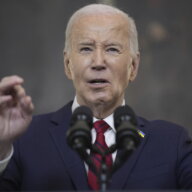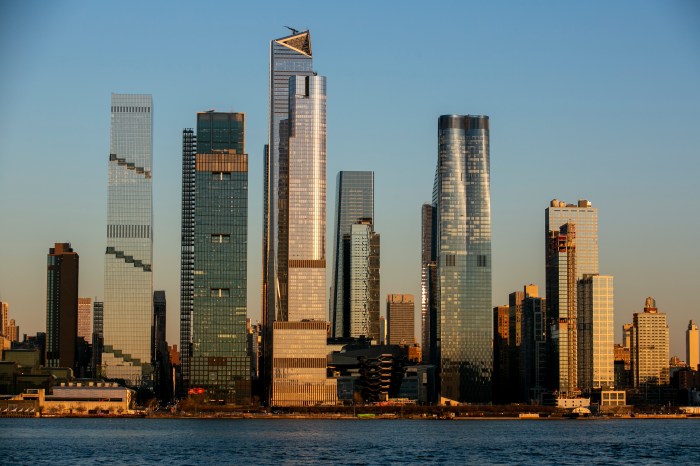Most Temple University students crossing Pollett Walk probably don’t notice the low stone wall that rests along the west side of Broad Street. But as writer Natalie Pompilio sees it, it’s the last surviving sign that thousands of students are walking every day over what was once the final resting place of the dead, and an important part of Philadelphia history.
The stone wall is the last remnant of Monument Cemetery, the burying ground of some 28,000 people, including Temple University founder Russell Conwell and his wife Sarah. The dead were moved in the ’60s to make room for Temple’s growing campus. Many of the headstones were later used to build the foundations of the Betsy Ross Bridge. It’s just one of the many ghost stories and historic hidden gems revealed by Pompilio in her book “Walking Philadelphia,” a guidebook of 30 walking tours exploring Philadelphia history.
“You could write about pretty much every place you pass,” Pompilio said during a recent trip down North Broad Street. “If you dig far enough, you’re going to find something.”
On a historic block like North Broad, Pompilio sees the nooks and crannies of Philadelphia history that most of us are unaware of. There’s the former Ford plant at 2700 N. Broad St., 10 stories tall and now unoccupied, a historic structure that produced 150 cars a day before World War I. An avid baseball fan, she’s excited to see the empty lot across from the former North Broad Station at 2601 N. Broad, formerly the home of Baker Bowl, the Phillies’ home stadium and the site where Honus Wagner got his 3,000th career hit in 1914.
Some sites are not well-known, like the Uptown Theater at 2240 N. Broad St. Formerly a stop on the “Chitlin’ Circuit,” venues that African American comics and artists performed in along in the Southeastern U.S., it was here that comedians like Redd Foxx (later the star of Sanford and Sons) and Flip Wilson performed, while radio DJ Georgie Woods was the main M.C.
During the 1964 race riots in North Philly, police called Woods to the theater to try to quell tensions, Pompilio recounted And when Prince of Pop Michael Jackson died in 2009, heartbroken fans gathered at the theater, even though it’s been shuttered since the ’80s. The theater, while empty, bears images of its glory days courtesy of Mural Arts, and new developers are planning to renovate, preserve and reopen the theater in 2019.
A lot of students likely don’t know that Sullivan Progress Plaza Shopping Center, home of a ‘Fresh Grocer,’ is a civil rights landmark named after the Rev. Leon Sullivan, a pastor known as the “Lion of Zion.” Sullivan’s many achievements include fighting for and helping to open Progress Plaza in 1968, intended to be a black-owned shopping center that could curb unemployment and serve the community. He was later awarded the national Medal of Freedom.
Other sites are more well-known, like Joe Frazier’s gym. Placed on the National Register of Historic Places in 2013 due to an application by multiple partners including Temple, (along a section of Glenwood Avenue known as “Joe Frazier Boulevard“) it is currently, and infamously, occupied by a discount furniture store.
“We as a city could do something else to honor Joe Frazier. I don’t like that it’s a horrible furniture store,” Pompilio said, before musing on whether the Boxer’s Trail in Fairmount Park, Frazier’s old favorite jogging path, gets enough credit. (The Fairmount Park Conservancy is holding a charitable 5K on the trail on Sept. 8.)

Philadelphia history: Spotting hidden gems around Philly
There are 30 alking tours in “Walking Philadelphia,” published in 2017, which Pompilio wrote with her sister Tricia Pompilio, covering almost every neighborhood in the city.
“Doing the Philadelphia book to me to neighborhoods I had never walked around in before, and I kept feeling like, ‘I could live here! and I could live here!’ But I still like mine the best,” said Pompilio, a Queen Village resident since 2003.
Pompilio, a North Jersey native, is a freelancer writer and journalist who previously was a staff reporter for the Philadelphia Inquirer and Times-Picayune in New Orleans, and did a stint overseas during the early days of the Iraq war. She’s a repository of endless Philadelphia lore, like the fact that the Drexel Dragons’ mascot is Mario the Magnificent, named for an alumnus who attended every game. “I love these people stories,” she said.
Asked to name the most quintessential historic Philadelphia site (hardly an easy request), Pompilio brought up Washington Square in Old City, which easily has more Philadelphia history than this entire article could describe.
The perennially popular tourist destination behind Independence Hall, before being named for George Washington in 1825, was “Congo Square,” where enslaved Africans and free blacks went by the thousands to sing and dance in celebration of festivals and holidays. It was also a burying place for slaves, the very poor, solders, and for many of the victims of yellow fever. On another side is the historic Curtis Center, former home of the Curtis Publishing Company. On another is the former site of the Walnut Street Prison, built by the British for American prisoners of war and later, as a city jail, the place where George Washington visited his friend, then-bankrupt Revolutionary War financier Robert Morris. The jailyard was also used by a Frenchman to launch the first manned balloon flight in North America.
“You get a little bit of everything,” Pompilio said.





























